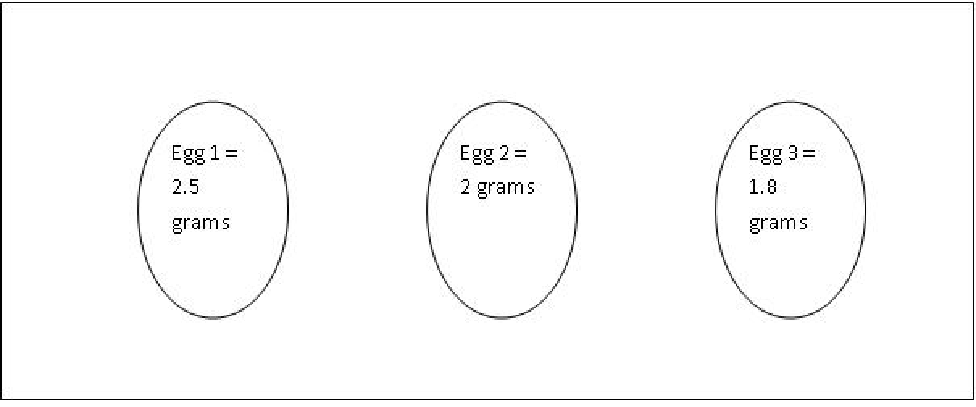Resistance of a microorganism to an antibiotic
A) means that the microorganism is susceptible to the antibiotic
B) can be acquired by genetic changes as well as by non-genetic mechanisms
C) leads to a disruption of cell membrane function
D) leads to a disruption of normal microflora
Ans: B) can be acquired by genetic changes as well as by non-genetic mechanisms
You might also like to view...
The solution in the container is hypertonic to which egg?
Three (3) eggs are boiled and all weigh 2g. The eggs are placed in a 15% solution of NaCl and reweighed after 30 minutes.

A. Egg 1
B. Egg 2
C. Egg 3
Clarify Question
· What is the key concept addressed by the question?
· What type of thinking is required?
Gather Content
· What do you know about osmosis? What other information is related to the question?
Choose Answer
· Given what you now know, what information and/or problem solving approach is most likely to produce the correct answer?
Reflect on Process
· Did your problem-solving process lead you to the correct answer? If not, where did the process break down or lead you astray? How can you revise your approach to produce a more desirable result?
Water distribution systems contain
A) very few bacteria or other microorganisms. B) biofilms that may harbor opportunistic pathogens. C) numerous grazing protists that consume bacteria. D) biofilms that may harbor opportunistic pathogens and numerous grazing protists that consume bacteria.
Once the lac repressor binds to the lac operator site, RNA polymerase is prevented from transcribing the
A. galactosidase gene. B. regulatory gene. C. galactoside transacetylase gene. D. galactosidase and galactoside transacetylase genes. E. galactosidase and regulatory genes.
Which term refers to plants that typically grow for many years?
a. perennials b. annuals c. monocots d. biennials e. eudicots